Make Belize your next big gay escape
Belize, called “The Jewel” by locals and visitors, is a hidden gem in Central America. It has adventure, culture, an island party scene, romance, and ways to unplug all packed into a country that often flies under the radar. For these reasons, Belize has long been a favorite Caribbean destination for LGBTQ travelers. Now through … Read More

Belize, called “The Jewel” by locals and visitors, is a hidden gem in Central America. It has adventure, culture, an island party scene, romance, and ways to unplug all packed into a country that often flies under the radar. For these reasons, Belize has long been a favorite Caribbean destination for LGBTQ travelers.
Now through May is the best time to visit Belize. These winter and early spring months are the Central American country’s dry season. Temperatures hover in the 70s and 80s, bringing more warm sunny days than rainy days and ample opportunity for exploring jungles filled with caves, rivers, waterfalls, and Mayan ruins. Alternatively, you can relax under an umbrella on Belize’s pristine white sand beaches on a private island or at a beach resort.
Belize is the only English-speaking Central American country. Colonized by the British in 1862, Belize gained independence from Britain in 1981. It joined the Commonwealth the same year. However, one relic of the British colonial era that Belize retained was the Buggery Act, which made sodomy punishable by death. Belize’s Supreme Court struck down the country’s anti-sodomy law in 2016, which decriminalized same-sex relationships.

However, discrimination against LGBTQ people persists. There are no legal protections for sexual orientation and the country does not recognize gender identity and gender expression. At the same time, Belize is a diverse country with Mestizo (Mayan and European), Creole (African and Afro-European), Mayan, and Garifuna (Afro-Amerindian) people along with new waves of expatriates, mostly Americans and Canadians, who own resorts and tour businesses that welcome LGBTQ travelers to Belize.
Pick your vacation-style private island, jungle adventure, beach resort, or mix it up with a jungle/island or jungle/beach experience. Belize won’t disappoint you. I chose all three — adventure, culture, and relaxation at a private island escape — during a week exploring Belize.
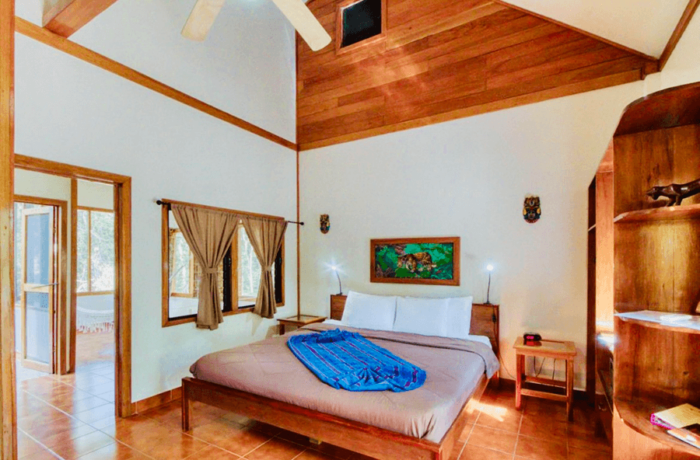
Adventure
Belize is home to the world’s second-largest barrier reef and features the Great Blue Hole, which is a part of the Belize Barrier Reef Reserve System, a UNESCO World Heritage Site, reported Travel & Leisure. It is one of Belize’s biggest attractions. The large underwater sinkhole surrounded by the Lighthouse Reef atoll is estimated to be nearly 1,000 feet across and 400 feet deep. It is so large it can be seen from space. The Great Blue Hole attracts divers from all over the world to explore its underwater mysteries and see more than 100 species of corals and 500 species of fish, according to Dive SSI.
The Caribbean Sea also offers wonderful opportunities for snorkeling. During my visit, our captain (who looked like a young handsome pirate) took my group of snorkelers out to what seemed like the middle of the Caribbean Sea off the private island of St. George’s Caye. There we saw colorful tropical fish, starfish, and conches on the sea’s floor as we swam around in the crystal-clear blue water.
Want to feel more like Indiana Jones than Jacque Cousteau? Belize offers plenty of land adventures that include water, animals, ruins, and jungle trails. During my journey through the country, I withstood the muddy, bumpy roads inside the Chiquibul Forest Reserve to enjoy hiking through the jungle to water holes, waterfalls, and Mayan ruins at Caracol Natural Monument Reservation, a living archeological site.
Belize offers nature lovers nine of the 13 types of forests in the world and nearly as many wild animals. The central American country comes in as a close second to its cousin, Costa Rica, which offers 13 different rainforests and 4% of the world’s animals. Belize has approximately 145 mammals (including Yucatan black howler monkeys), 139 reptiles (including the nearly extinct green iguana) and amphibians, and more than 500 species of birds, making the Central American country a birders’ paradise.
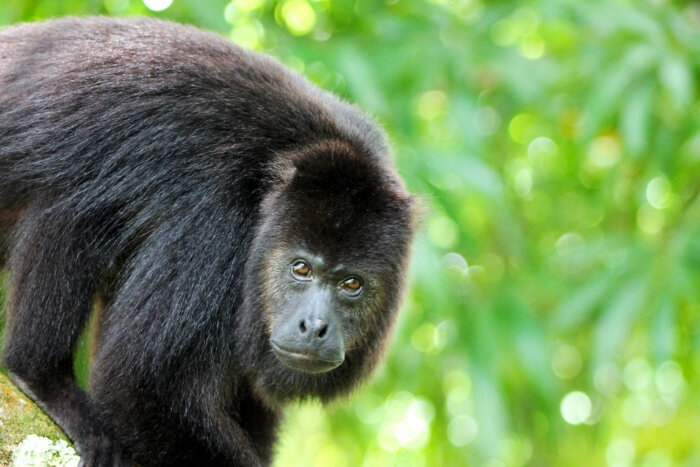
The Yucatan black howler monkeys are native to Belize, Guatemala, and Mexico. The green iguana is native to Belize. Jaguars are native to the area spanning from the southwestern United States to central Argentina. These animals have been in danger due to overhunting and human activity encroaching on their habitats. Sanctuaries protect the howler monkeys, iguanas, and jaguars. Animal lovers can see these incredible creatures at the world’s only jaguar reserve, the Cockscomb Basin Wildlife Sanctuary & Jaguar Preserve, the Howler Monkey Sanctuary (officially named the Community Baboon Sanctuary Visitors Center and Museum), and San Ignacio Resort Hotel’s Green Iguana Conservation Project.
San Ignacio is the jumping off point to explore Mayan ruins and to go on jungle treks and other adventures. The town itself is bustling, especially on market days, with interesting things to do, including walking through the markets shopping for artisan crafts, visiting the green iguanas, trying Belize’s famous hot sauce, and making chocolate the Mayan way.
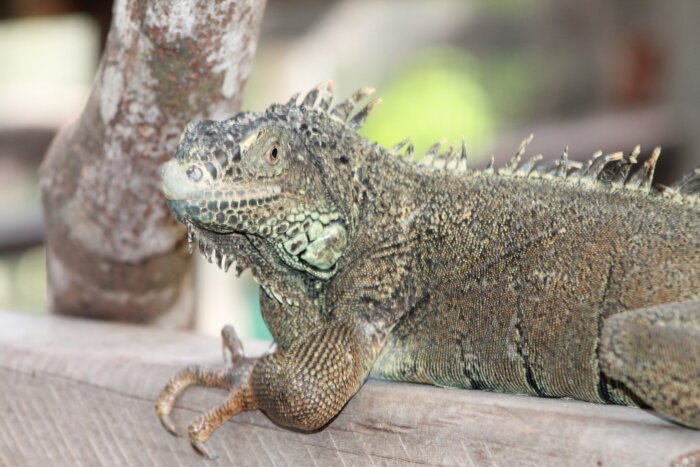
The Mayan ruins, Caracol, was one of the Mayan civilization’s largest cities. At the height of its power, the city sprawled over 38 square miles and was home to nearly an estimated 100,000 people, according to Florida-based archeologists Arlen and Diane Chase, who have been unearthing the ancient Mayan city’s history since 1985.
I floated down the Belize River through sacred Mayan caves in a tube and learned about the history and what the caves meant to the Mayans at Cave Tubing, an outdoor adventure park. Though I was scared, I braved the dark on a night tour deep into a cave filled with Mayan artifacts at Bol’s Museum Cave.
Culture
Belize’s multiethnic culture weaves together a beautiful tapestry of artwork and crafts found in its open-air markets and dishes at rustic restaurants.
Mayans are everywhere in Belize, but their presence is felt most in the mountains. In San Ignacio their spirit is alive and well, showing off their culture from ancient caves and ruins to the roots of chocolate.
One of my favorite things to do to get to know a culture is to walk through markets and eat. In San Ignacio, my guide, Tosh Lanza, one of Belize’s few taxi and shuttle drivers, showed me around the market, pointing out authentic crafts and talking about the different vendors during the morning. In the afternoon, she took me to the city’s few women-owned restaurants. In Belize, it is not common for native women to work outside of the home, I was told. That is starting to change, but very slowly.
Despite the lack of women-owned businesses, we still found several that are thriving in Belize. For travelers who like it hot — not the weather, but their food — Marie Sharpe’s Hot Sauce shop offers cooking classes with her famous spicy concoctions and bottles to take home. I prefer things on the sweeter side of life, so I satisfied my sweet tooth by taking a chocolate-making class at AJAW Chocolate & Crafts. AJAW offers classes and tours of its cacao farm.
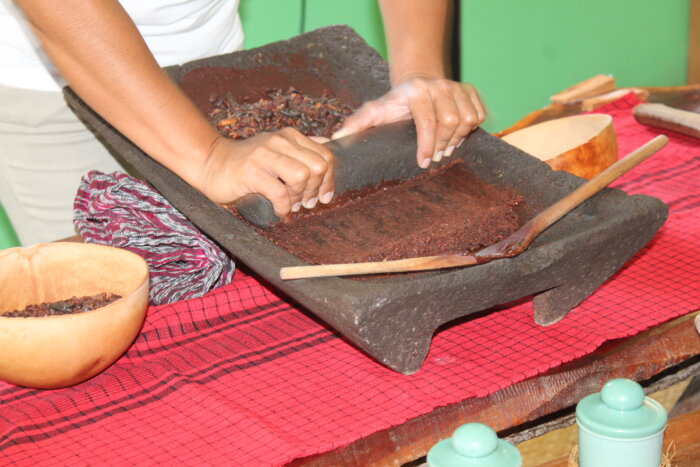
If you aren’t eating traditional Belizean food, a blend of Mayan and each of the cultures dishes that make up Belize, you might be in the wrong place. The Mariposa Jungle Lodge and St. George’s Caye serve up beautiful traditional Mayan cuisine from the land and the sea that was pleasing to the palate. Visitors can also visit the women-owned Cenaida’s Belizean Food Restaurant and Cheers Restaurant & Cabanas, which is owned by a Canadian expat.
Further south in the resort town of Hopkins Village, Garifuna people are keeping their traditions alive. The Garifuna are descendants of a mix of formerly enslaved Africans and indigenous people originating in Honduras. Today they inhabit Belize, Guatemala, Honduras, and Nicaragua. At Tugusina Garifuna Hopkins Village, I learned about Garifuna history, culture, and cuisine. I dined on Sere, a coconut fish stew with vegetables customarily served with mashed plantains. We gulped down refreshing lime and watermelon water to keep cool in the hot weather. We were entertained by musicians singing traditional Garifuna drumming, song, and dance.
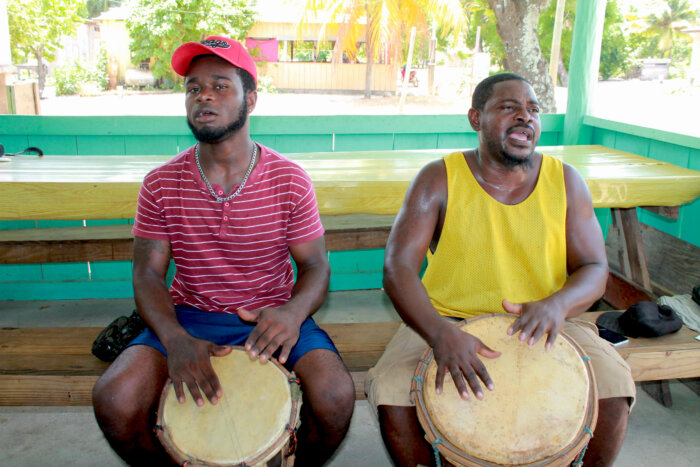
In the evening, I relaxed in a beach chair watching the waves lap the white sand at Beaches & Dreams, a beachfront boutique hotel in Hopkins Village, before enjoying a light seafood meal at the adjoining restaurant.
Private island experience
I unplugged for a couple days on St. George’s Caye. St. George’s Caye is a luxury island escape in a string of keys just off the coast outside of Belize City, the country’s former capital. Visitors can choose to enjoy the keys and resort and the opportunity to be mostly offline. For those who need to have some connection, there are day trips to neighboring keys, including where the nightlife is in San Pedro on Ambergris Caye, and water sport excursions operated from the resort.
I enjoyed one day on a snorkeling excursion. The rest of the time, I relaxed, read, and got to know my neighbors while sipping cocktails at the bar.
Getting there
JetBlue became the first airline to fly nonstop Mondays, Wednesdays, and Saturdays from John F. Kennedy International Airport to Belize City in December, according to a December 6, 2023 news release from the low-cost airline.

 Mark
Mark 





